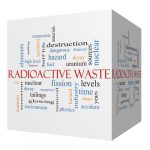Category: Chemicals
Today’s workplace uses thousands of chemicals, many of which are hazardous. The resources in this section will help guide you in the safe and legal identification, storage, transport, and use of these chemicals, and in making sure that your employees right to know how to be safe around such substances is provided, as required by law.
Yesterday, we looked at substances that can cause or aggravate asthma that are often found in the work environment—both where they are being manufactured and also at the point of use. We also identified some industries in which exposure to asthmagens—asthma-causing chemicals—might be of greatest concern. Today, we’ll look at strategies employers can use to […]
Every day in America, 30,000 people suffer an asthma attack. Five thousand of them go to the emergency room, 1,000 are admitted to the hospital—and 11 will die. Although those numbers include asthma sufferers of all ages—children are especially susceptible to asthma-causing chemicals—a significant number are workers. As many as 15 percent of adults develop […]
Conclusions from the TSCA Assessment of Dichloromethane According to the EPA, the use of products containing DCM for paint stripping poses some of the highest exposure risks compared to all uses of DCM. The chemical is a volatile organic compound (VOC) and is also considered to have “likely carcinogenic properties.” In 2012, 261.5 million pounds […]
Conclusions from the TSCA Trichloroethylene Assessment Each year, the United States uses 225 million pounds of TCE, a volatile organic compound (VOC) and human carcinogen. TCE is used widely, primarily in industrial and commercial processes as a solvent, degreaser, and fixative. EPA’s Office of Pollution Prevention and Toxics (EPA/OPPT) focused the TCE assessment on characterizing […]
In yesterday’s article, we looked at the labeling requirements for solid materials, specifically, when a solid material is an “article” that does not require labeling and when it is a potentially hazardous chemical that must be labeled. Today, we’ll look at other unusual labeling situations that may arise and how to handle them.
When we think of chemical labeling, we tend to think of “ordinary” situations—gallon jars of sulfuric acid sporting OSHA’s new pictograms, or bags of insulation with their hazard labels prominently displayed. But hazardous chemicals don’t always come in what we think of as “ordinary” containers, nor do they stay there—they are, after all, intended for […]
Yesterday we looked at the hazards of methylene chloride, a common paint-stripping chemical with many industrial uses—and many hazards, including cancer. Today, let’s talk about how to protect workers from exposure to this narcotic, corrosive, carcinogenic chemical.
Methylene chloride (also called dichloromethane) is a solvent with many uses, including paint stripping, polyurethane foam manufacturing, and cleaning and degreasing. You might not think that a chemical you can buy at your local home improvement store for use at home would be all that dangerous, but don’t be fooled. Methylene chloride is hazardous enough […]
Chemical accidents involving ammonium nitrate are rare, but have the potential for significant property destruction, injury and death. Although the Environmental Protection Agency (EPA), Occupational Safety and Health Administration (OSHA), and Department of Homeland Security (DHS) all have regulations in place, they apparently are not adequate to prevent accidents or ensure emergency response is prepared. […]
Yesterday, we looked at the six essential elements of a HAZWOPER site analysis. Today, we’ll look at the requirements for site management and site control.










